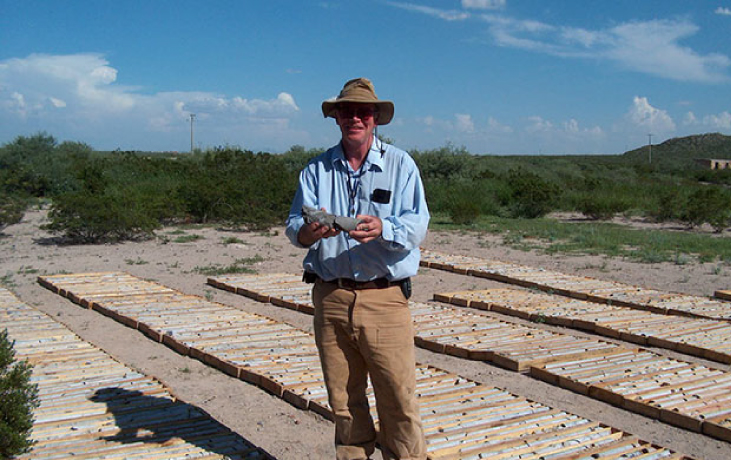- March 3, 2023
proEXPLO 2023: CRD-type ore deposits have up to 400 million tons of high grades of silver, zinc and lead

Carbonate replacement deposits (CRDs) are characterized by polymetallic richness, continuous mineralization, polyphase systems, large-scale zonation, temperatures greater than 250°C and for being intrusion-related, according to insights shared by consultant exploration geologist Peter Megaw.
During his talk at the Road to proEXPLO 2023 webinar, he stated that CRD deposits are sought after primarily because they contain between 10 to 400 million tons of resources, maximum grades of silver (50 oz/t), zinc (25%), lead (25%) and copper (5%), low mining cost, metallurgical docility and minimal environmental footprint.
"In this regard, the Santa Eulalia district, in Chihuahua-Mexico, is a case of a CRD deposit, whose activities were maintained for more than 300 years until the pandemic, with an extracted volume of 51.5 million tons, and with advantageous average grades of silver (10 oz/t), lead (8.2%), zinc (7.1%), copper (0.3%) and tin (1.5%)," he exemplified.
However, he acknowledged that the exploration of this type of deposits has historically been poor, due to limited understanding of regional controls, underestimation of the continuous spectrum between skarn porphyries and CRD, mantles considered erratic, difficulty in distinguishing outcrops of large and small systems, etc.
"With new advances in deposit exploration, we now have better understanding of regional controls, confirmation of spectra between skarn and CRD, large-scale traceable alteration halos, geochemical and isotopic halos, large-scale coherent zonation, and outcrops of large distinguishable systems," the expert compared.
Replacement Process
According to the president of Imdex, the replacement process occurs by almost simultaneous dissolution of carbonate and deposition of sulfides. This mechanism causes volume reduction with collapse, which enhances permeability, and suggests that fluids must migrate through previously formed ore to the deposit growth sites.
"Replacement is a multi-stage repeating process, some stages are stronger than others and some reactions exclude others. As for the overlapping of stages and products, there is a highly complex overprinting of multiple simple zonings with differences derived from previous stage products," the expert said.
A strategic location
In addition, Peter Megaw noted that the most relevant CRD deposits are predominantly located in areas of folding and tectonic plate contacts, such as the eastern Pacific basin belt, the western Pacific basin belt, the Eurasian Tezian belt and the eastern Asian-Arctic belt.
"Large carbonate replacement systems are the product of multi-stage magmatic-hydrothermal events, structural controls are paramount, the overprinting process is complex because of alteration and mineralization, and textural complexity is an indicator of the magnitude and favorability of the deposit," he considered.
proEXPLO 2023: Descubriendo la Minería del Futuro





